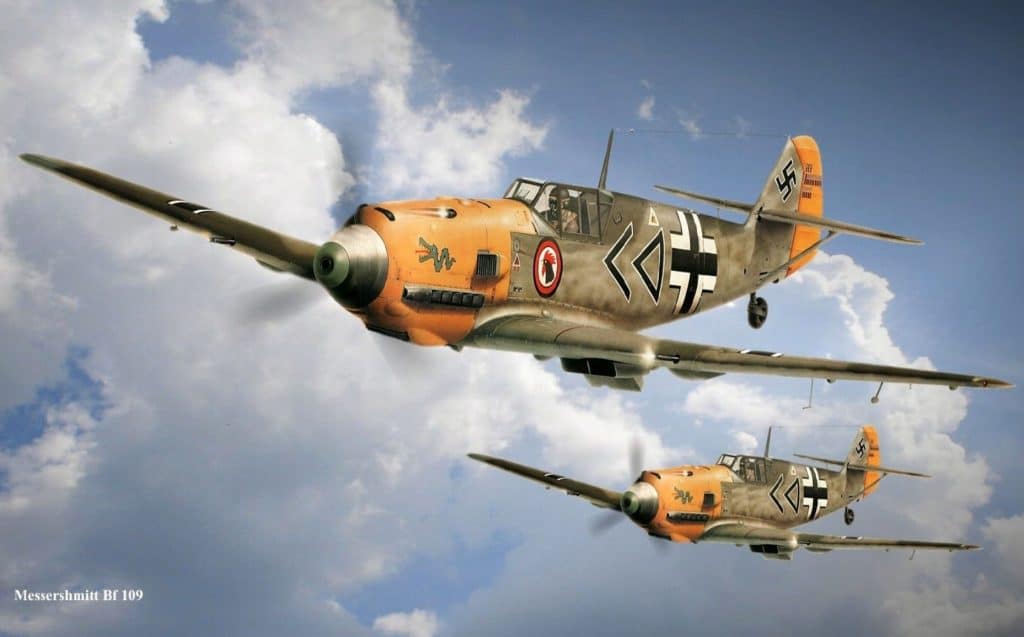The mainstay of the Luftwaffe at the outbreak of war in 1939, the Messerschmitt Bf 109 was the German World War II fighter aircraft which (along with the Focke-Wulf Fw 190 later in the war) formed the backbone of the Luftwaffe’s fighter force. The Bf 109 first saw operational service in 1937 during the Spanish Civil War and was still in service at the dawn of the jet age at the end of World War II in 1945.
One of the most advanced fighters of its day when it first appeared, with an all-metal monocoque construction, a closed canopy, and retractable landing gear, it was powered by a liquid-cooled, inverted-V12 aero engine.
Originally conceived as an interceptor, although later models were developed to fulfill multiple tasks, it was designed by Willy Messerschmitt and Robert Lusser during the early to mid-1930s. Together with its prime fighter function, it also served as bomber escort, fighter-bomber and as a day-night, all-weather fighter, ground-attack aircraft, and reconnaissance aircraft.
Over the years, more than 100 variants of the basic design were created, including modifications introduced on Spanish and Czech production lines after the war. Larger and larger engines were installed, along with hundreds of pounds of additional equipment, and the tough little airframe took it all. Examples from the final German operational version, the Bf 109K series, had a 2,000-horsepower engine and a top speed of 450 miles per hour — not bad for a design begun in 1934.
From the end of 1941, the Bf 109 was steadily supplemented by the Focke-Wulf Fw 190. Known as the Me 109 by Allied aircrew and some German aces, even though this was not the official German designation, it was flown by the three top-scoring fighter aces of all time, who claimed 928 victories among them while flying with Jagdgeschwader 52, mainly on the Eastern Front. The highest-scoring, Erich Hartmann, was credited with 352 victories. The aircraft was also flown by Hans-Joachim Marseille, the highest-scoring ace in the North African Campaign who shot down 158 enemy aircraft. It was also flown by many aces from other Axis nations, notably the Finn Ilmari Juutilainen, the highest-scoring non-German ace. Pilots from Italy, Romania, Croatia, Bulgaria, and Hungary also flew the Bf 109.
Throughout its career, the Bf 109 was pitted against new and powerful adversaries, notably upgraded British Spitfires and the North American P-51 Mustang, although with constant development, the Bf 109 remained competitive with the latest Allied fighter aircraft until the end of the war and in the hands of a capable pilot, the “Me 109” as it was most often called, inevitably held its own. Tricky to take off and land, and not the best gun platform, the Messerschmitt nevertheless remained a formidable adversary itself.
It was supplied to several states during World War II, and served with several countries for many years after the war. The Bf 109 is the most produced fighter aircraft in history, with a total of 33,984 airframes produced from 1936 to April 1945.
As of December 2016 there are 67 known existing Bf 109 airframes still in existence and around twenty of those surviving are known to have served at one time with the Luftwaffe fighter wing Jagdgeschwader 5.
